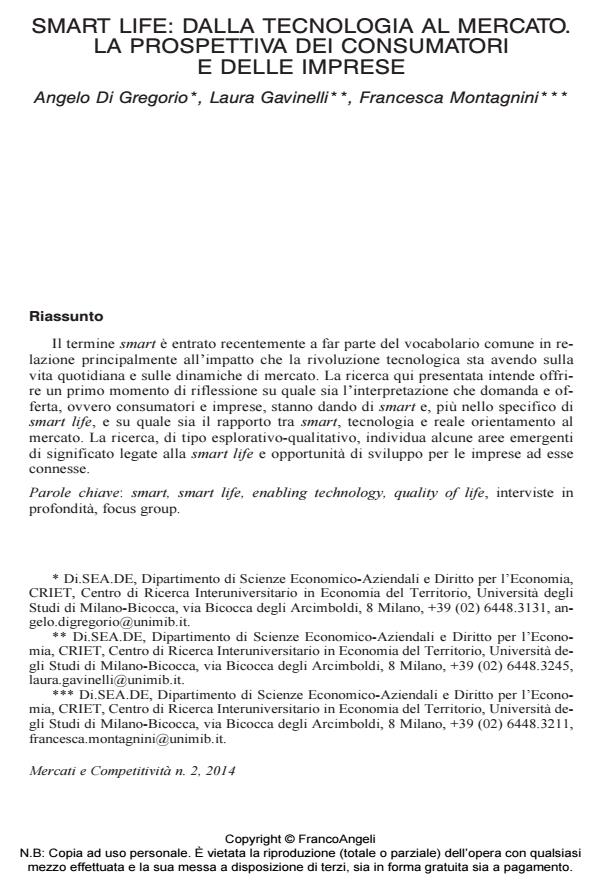Smart life: dalla tecnologia al mercato. La prospettiva dei consumatori e delle imprese
Titolo Rivista MERCATI E COMPETITIVITÀ
Autori/Curatori Angelo Di Gregorio, Laura Gavinelli, Francesca Montagnini
Anno di pubblicazione 2014 Fascicolo 2014/2
Lingua Italiano Numero pagine 28 P. 13-40 Dimensione file 132 KB
DOI 10.3280/MC2014-002002
Il DOI è il codice a barre della proprietà intellettuale: per saperne di più
clicca qui
Qui sotto puoi vedere in anteprima la prima pagina di questo articolo.
Se questo articolo ti interessa, lo puoi acquistare (e scaricare in formato pdf) seguendo le facili indicazioni per acquistare il download credit. Acquista Download Credits per scaricare questo Articolo in formato PDF

FrancoAngeli è membro della Publishers International Linking Association, Inc (PILA)associazione indipendente e non profit per facilitare (attraverso i servizi tecnologici implementati da CrossRef.org) l’accesso degli studiosi ai contenuti digitali nelle pubblicazioni professionali e scientifiche
Il termine smart è entrato recentemente a far parte del vocabolario comune in relazione principalmente all’impatto che la rivoluzione tecnologica sta avendo sulla vita quotidiana e sulle dinamiche di mercato. La ricerca qui presentata intende offrire un primo momento di riflessione su quale sia l’interpretazione che domanda e offerta, ovvero consumatori e imprese, stanno dando di smart e, più nello specifico di smart life, e su quale sia il rapporto tra smart, tecnologia e reale orientamento al mercato. La ricerca, di tipo esplorativo-qualitativo, individua alcune aree emergenti di significato legate alla smart life e opportunità di sviluppo per le imprese ad esse connesse.
Parole chiave:Smart, smart life, enabling technology, quality of life, interviste in profondità, focus group.
Angelo Di Gregorio, Laura Gavinelli, Francesca Montagnini, Smart life: dalla tecnologia al mercato. La prospettiva dei consumatori e delle imprese in "MERCATI E COMPETITIVITÀ" 2/2014, pp 13-40, DOI: 10.3280/MC2014-002002